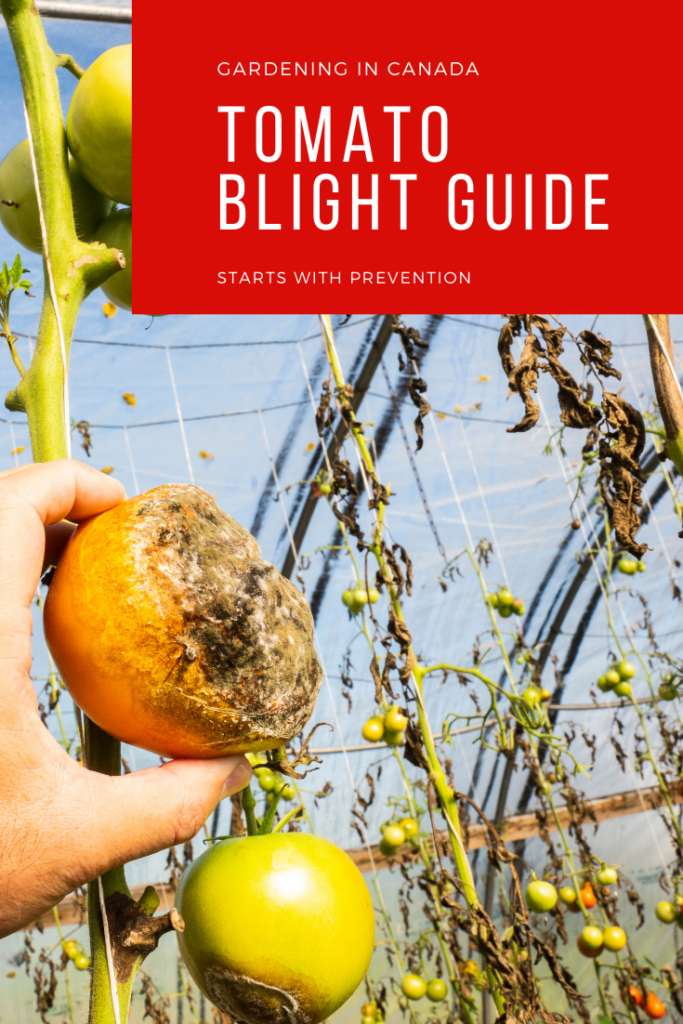- Canada’s Growing Zones Are Changing 2024 - January 12, 2024
- Attracting Wildlife To The Garden - May 16, 2023
- How To Garden Near A Septic Tank - May 9, 2023
Tomato blight is a common fungal disease that can devastate your garden, causing leaves to yellow and wilt, and eventually leading to the death of your plants. It’s important to take steps to prevent and control tomato blight, as it can be difficult to eliminate once it takes hold. Here’s what you need to know about tomato blight and how to prevent it in your garden.
What Is Tomato Blight?
First, let’s talk about what causes tomato blight. The fungus responsible for tomato blight, known as Alternaria solani, overwinters in the soil and can also survive on plant debris in the form of spores. When the weather is warm and wet, these spores can infect your tomato plants, causing them to become diseased.
Choose A Resistant Variety
One of the most effective ways to prevent tomato blight is to choose tomato species that are resistant to the disease. Look for varieties that are labeled as “resistant to early and late blight” or “resistant to Alternaria solani.” These varieties have been bred to be less susceptible to the fungus, so they’re less likely to become infected.
Blight-resistant tomatoes:
- Mountain Magic: https://bit.ly/3LN1daq
- Damsel: https://bit.ly/3y2vufJ
- Galahad: https://bit.ly/3E51DHz
- Early Girl: https://bit.ly/3CfgJZu
How To Water To Prevent Blight
In addition to selecting resistant varieties, there are a few other steps you can take to prevent tomato blight in your garden. First, make sure to water your plants at the base of the plant, rather than from above. This will help prevent the spores from splashing onto the leaves and infecting the plant.
Avoid Overcrowding
You should also avoid overcrowding your plants, as this can make it more difficult for air to circulate and dry out the leaves. This can create a humid environment that is more conducive to the growth of the fungus.
Future Prevention
If you’ve had tomato blight in your garden in the past, it’s important to take extra precautions to prevent it from returning. One way to do this is to compost any infected plants, rather than leaving them in the garden. This will help to reduce the number of spores in the soil, making it less likely that the fungus will survive and infect your plants again.
Composting Diseased Plants
If you’re using compost in your garden, make sure it’s hot enough to kill any lingering spores. The compost should reach a temperature of at least 131°F (55°C) for at least three days in order to effectively kill the fungus. If your compost doesn’t reach this temperature, it’s best to avoid using it in areas where you’ll be growing tomatoes.
To sum up, tomato blight is a common fungal disease that can be difficult to eliminate once it takes hold. To prevent it in your garden, choose tomato species that are resistant to the disease, water your plants at the base, avoid overcrowding, and compost infected plants. If you’re using compost, make sure it reaches a high enough temperature to kill any lingering spores. By following these steps, you can help to keep your tomato plants healthy and free from blight.

